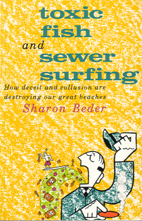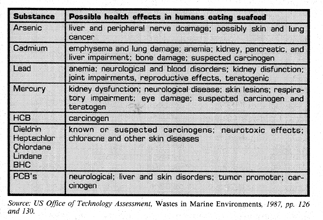
by Sharon Beder
first published by Allen & Unwin, Sydney, 1989
Introduction
Sewers seaward
Toothless watchdog
Toxic fish
Sewer-side surfing
Public relations battle
Events of 1989
Beyond Sydney
Conclusion
Bibliography
THE MARINE degradation happening of Sydney’s coastline makes eating seafood caught in Sydney waters a health hazard. This has happened because the Water Board has sought to supply industry with a cheap waste disposal system, because the SPCC has failed to set standards that would properly implement the Clean Waters Regulations, and because politicians of both major parties have cooperated in a decade or more of cover-ups, keeping secret the evidence that toxic waste has been accumulating in fish to an alarming extent.
Industrial waste going to the sea via the sewers poses a major threat both to the marine environment and to the health of people who eat fish. Organic chemicals such as those in the organochlorine group are very stable and often persist in the environment for long periods. Fish can accumulate these compounds even when there are very 1ow concentrations in the water. The toxins can be concentrated as each organism is in turn eaten by another.
Other toxic materials, like trace metals, can also be absorbed from the water or eaten in contaminated food or aquatic plants. Of the heavy metals that are discharged in industrial waste, mercury and cadmium are of particular concern because of well-documented acute health effects. In Minamata, Japan, more than 100 people died and 700 suffered ‘severe, permanent neurological damage’ after eating seafood that had been contaminated by industrial waste containing mercury. Also in Japan, 60 people died when rice paddies were contaminated with industrial waste containing cadmium. Other heavy metals also pose a health threat if they are present in human food.

The possible consequences of eating seafood contaminated with toxic waste